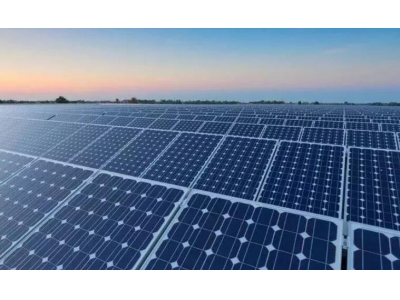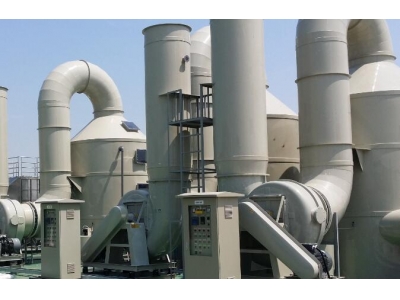一、电源和主板需要配套?
机箱可以满足放进所有硬件,并由一定散热能力电源,需要额定功率满足大于等于CPU功耗+显卡功耗+100W功率,就行主板,最主要是接口和CPU要配套,能安装进机箱里(大主板放不进小机箱里),要外接独显的,需要有显卡接口(基本都有),内存接口配套,具有一定的可升级性能。
二、宅基地配套费是什么?
配套费全称为“住宅建设配套工程费”。自上世纪90年代开始就存在了。按开发的住宅小区建筑面积量,规定一个单价。
用途:1、用于市政配套的有:住宅项目周边的城市道路、雨污水系统、供水、供气和公交站点,还包括全部为住宅服务的污水厂的部分建设费用;
2、用于公建配套的有:居住区内按规划要求建设的中小学、幼儿园、托儿所、街道办事处、居委会、派出所、老年活动室、公共厕所、环卫分所、小区公园(征地费)和3000平方米以上的集中绿地。
其原理是,开发商在此地建了住宅小区,必然将居民人口引进该地,随之而来,政府的社会服务职能要跟进,需要设施投入。但建商品房住宅小区是商业行为,所以,费用来源也采取了市场化做法,即规定由开发商掏钱。
在实际执行过程中,交了这笔钱之后,开发商如果又自己完成了其中的部分项目,则对应部分的资金可以返还给开发商。具体由房管局验收后审核。
三、矿机配套电源故障原因?
电器最怕水和粉尘啊。矿机电源产生静电,很容易吸尘的。粉尘多了就会短路
四、西安航天基地配套住宅小区地址在哪?
西安市航天大道以南神舟六路以西大华公园世家对面
五、潍坊拓展训练基地有几个,哪家配套比较方便呀?
我在潍坊学院做老师,兼职拓展教练,潍坊周边的拓展训练基地我基本上在这几年的周末和假期走遍了,潍坊无外乎就是几个,浮烟山上03年建了一个,是潍坊最早的拓展基地了,不过遗憾的是去年拆掉了,拆了也好,以前去那里带班吃饭还要走到山下去,非常不方便,住宿也在山下,基本上一天就会在走路中累死。
还有在云门山上有个,两年前建的,建的不错,项目也比较全,但住宿和吃饭也要到山下,有一个最大的缺点就是太晒,基地上没有任何遮阴的地方,基本上一天下来掳起袖子就是明显的分界线,金宝乐园还有一个基地,是05年建的,属于金宝乐园的,喜欢去玩的到那里比较合适,因为基地和公园通着,可以去做游艺项目和看熊猫,不过如果说是纯培训的环境的话不太行,人太多,到处都是孩子,因为潍坊唯一的公园就是金宝乐园,还有一个新建的潍坊市委党校的基地,我前天刚去帮他们带了个队,配套设施应该在潍坊市最高标准了,吃住都在一体,有个半室内的体育场很多项目可以在里面做不会晒到,环境也比较好,值的推荐,但总也有不如人意的地方,因为这个基地在潍坊和昌乐交汇处,虽然交通方便但周边配套还不行,整个800亩地的党校只有一个小小的便利店,如果要采购就不太方便了! 我认为你要选择拓展训练基地可以在以上几个研究研究,最好实地考察一下,需要培训师的时候可以找我哦!
六、中国可再生能源基地英文版
中国可再生能源基地英文版
Introduction
China has been making significant strides in renewable energy production and has emerged as a global leader in this sector. With increasing concerns about climate change and the need to reduce dependence on fossil fuels, the development of renewable energy sources has become a top priority for the country. One of the key initiatives in this regard is the establishment of renewable energy bases or "基地" in Chinese, aimed at harnessing the power of nature while promoting sustainable and green practices.
The Concept of Renewable Energy Bases
A renewable energy base is a designated area where various renewable energy projects are concentrated. These bases are strategically chosen based on factors such as availability of resources, geographical conditions, and technological feasibility. The concept of renewable energy bases not only aims to increase the overall renewable energy capacity but also serves as a platform for innovation, research, and development in the sector.
Advantages of Renewable Energy Bases
Renewable energy bases offer a multitude of benefits to China's energy landscape:
- Increased Energy Production: By concentrating renewable energy projects in a specific location, the overall energy production capacity can be significantly increased. This helps address the growing energy demands of the country while reducing reliance on non-renewable sources.
- Efficient Resource Utilization: Renewable energy bases allow for improved utilization of available resources. For instance, wind farms can be established in areas with consistent wind patterns while solar farms can be set up in regions with ample sunlight. This results in optimal utilization of renewable energy sources and reduced wastage.
- Technological Advancement: The concentration of renewable energy projects in a base fosters collaboration, knowledge sharing, and technological advancements. Researchers, engineers, and experts work together to explore new possibilities and develop innovative solutions to enhance the efficiency and effectiveness of renewable energy technologies.
- Economic Growth: Renewable energy bases create job opportunities, stimulate economic growth, and attract investments. These bases not only generate employment in the construction and maintenance of energy projects but also boost the local economy through ancillary industries such as manufacturing of equipment, components, and infrastructure.
- Environment Conservation: Perhaps the most significant advantage of renewable energy bases is their positive impact on the environment. By shifting towards renewable sources, China can reduce its carbon footprint, mitigate air pollution, and contribute to a sustainable future for generations to come.
Examples of Renewable Energy Bases in China
China has established several remarkable renewable energy bases across the country:
Qinghai Hainan Tibetan Autonomous Prefecture Renewable Energy Base
Located in the pristine Qinghai province, this base is known for its vast wind and solar power installations. The region benefits from strong winds and ample sunshine, making it an ideal location for wind and solar farms. The base has considerably boosted the renewable energy capacity of the province and serves as a model for the integration of clean energy sources into the grid.
Zhejiang Ningbo Renewable Energy Base
Ningbo, a coastal city in the Zhejiang province, is home to one of China's most prominent renewable energy bases. This base primarily focuses on offshore wind power generation due to its advantageous location along the coastline. The base not only contributes significantly to the overall renewable energy targets of the country but also showcases the potential of offshore wind farms in meeting the energy demands of densely populated coastal regions.
Shanxi Datong Renewable Energy Base
Shanxi Datong Renewable Energy Base, situated in the coal-rich Shanxi province, represents a transition from coal-dependence to renewable energy sources. This base aims to transform the energy landscape of the province by harnessing wind and solar power. By utilizing the existing energy infrastructure and repurposing coal mines for clean energy projects, this base is a testament to China's commitment to a greener, more sustainable future.
Conclusion
China's renewable energy bases play a crucial role in not only increasing the country's renewable energy capacity but also promoting sustainability, innovation, and economic growth. Through the consolidation of renewable energy projects in specific areas, China can maximize the utilization of resources, foster technological advancements, and reduce environmental impact. These bases serve as exemplary models for other countries striving to achieve a clean energy transition, and they position China as a global leader in renewable energy production and sustainability.
七、h3c s5130配套电源是什么型号?
是GRE GPL420-ADH HPSL380-AD S5130-52S-PWR-EI交换机电源模块。
八、建设一个空军基地需要那些基础设施和配套设施?
你好!
先说一部分余者大家补充。
既然是空军基地,首先得建一条或几条跑道吧,指挥塔台也是必不可少地,气象站、油库、机库(含维修车间)、弹药库一个都不能少,人员得有地儿住啊!所以军官(飞行员)、士兵的宿舍也得盖,医院也很重要,还有看你要建个多大的基地?如果只有一、二个中队就凑合了,要是大型的,还要有商业、娱乐设施,什么超市、影院、图书馆、体育馆都得有。美军住横须贺的基地就像一个小社会。
九、华硕P5G41T-MLX主板配套的电源有哪些?
g41的板子,支持全系列inter酷睿e系及q系cpu
性能嘛,一般吧
g41板子一般搭配e5或者e6档次的u、ddr2800内存以及gt240档次的显卡,这样的搭配加上电源等大约预算在2400左右,基本可以打倒市面大部分游戏
希望我的回答对你有帮助!
十、如何建立高效可再生能源基地,为环境和经济双重受益
可再生能源基地的重要性
随着全球对清洁能源需求的增长,建立可再生能源基地变得日益重要。可再生能源基地是指利用自然资源(如太阳能、风能、水能等)来生产清洁能源的设施。在当前环境污染和气候变化日益严重的背景下,可再生能源基地的建立不仅有利于减少对化石能源的依赖,还可以降低温室气体排放,保护环境,同时也能带动当地经济发展。
选择合适的地理位置
建立可再生能源基地首先需要选择合适的地理位置。不同的可再生能源类型适合的地理环境各不相同。比如,太阳能基地需要充足的阳光照射,风能基地需要较强的风资源,水能基地需要丰富的水资源。因此,在选择地点时,需要充分考虑可再生能源的特点,并进行仔细的环境评估。
科学规划和设计
一旦确定了地理位置,就需要进行科学规划和设计。这包括确定基地的面积、布局、设备选择等。规划和设计阶段需要充分考虑周边环境和生态,做到科学合理规划,确保基地的安全高效运行。
技术设备的选择与运行管理
在建立可再生能源基地时,选择合适的技术设备尤为重要。针对不同的能源类型,需要选择对应的发电设备或发电技术,比如太阳能电池板、风力发电机组、水力发电机组等。同时,运行管理也是关键,需要建立科学的运行管理机制,保障设备的正常运行和维护,确保能源产出稳定和可持续。
环境保护与社区共享
建立可再生能源基地不仅是为了生产清洁能源,也需要兼顾环境保护和社区发展。在建设和运营过程中,需要采取有效的措施保护植被、野生动物及其栖息地,避免对当地生态环境造成破坏。同时,也要与当地社区充分沟通,实现资源共享,使当地居民受益于可再生能源基地的建设。
结语
建立高效可再生能源基地对环境和经济都有着重要意义。通过科学规划和设计、技术设备的选择与运行管理,以及环境保护与社区共享,可再生能源基地能够实现清洁能源生产和环境保护的双赢局面,为推动可持续发展做出积极贡献。
感谢您阅读本文,希望对您理解如何建立高效可再生能源基地有所帮助。





